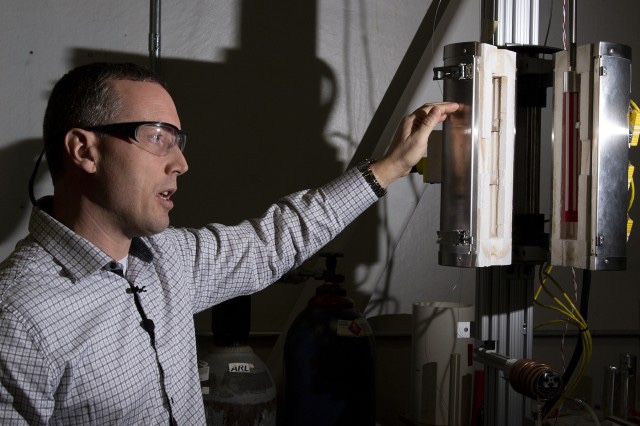At the 15th Annual Ground Vehicle Systems (GVS) Engineering & Technology Symposium, held this week in Novi, Michigan, Eric Wetzel of the US Army Research Laboratory (ARL) announced that the branch is currently looking to expand its GVS additive manufacturing (AM) activities. Wetzel is the team leader for the project to develop multifunctional AM materials for the US Army’s M998 High Mobility Multipurpose Wheeled Vehicle (HMMWV/Humvee) program.
According to Breaking Defense, Wetzel stated at the symposium that the army’s decision to increase its 3D printing for GVS from initial successes with a program started three years ago, to 3D print battery brackets for the M998 using fused filament fabrication (FFF). Breaking Defense reports that Wetzel noted that the impetus behind the M998 project is the impending phase-out of the vehicle’s existing aluminum battery brackets. The 3D printed brackets are already set to be installed on Humvees that will subsequently be field tested by the Maryland Army National Guard.

Breaking Defense quotes Wetzel, “We are looking for more use cases. We are looking for manufacturing partners. Our plan is to expand consideration to other parts.” As the Breaking Defense article notes, the key to the 3D printed battery brackets is the post-processing method, which entails annealing, specifically shell annealing, typically used to prevent shell casings from getting too brittle. Aside from the fact that the military is already familiar with this equipment, the benefit is that shell annealing machines are often portable. Back in 2020, when the project was just getting started, Wetzel told the Army News Service, “Our technology is an approach that allows us to use these conventional desktop printers, but then apply post-processing to dramatically improve the toughness and strength between layers. Manufacturing at the point-of-need provides some exciting possibilities. …This paradigm shift could allow us to innovate at a much higher speed, and be keenly responsive to the ever-changing battlefield.”

Wetzel appears to have been right on the money, and this type of foresight perfectly encapsulates why the US military’s increased adoption of AM is so pivotal for the sector. As Wetzel also hinted at in his declaration that the US Army is “looking for manufacturing partners,” the next step in the process is commercialization of the types of applications the military and its private sector partners have spent years developing.
In terms of the GVS realm, as I wrote about earlier this year, this is why the US Army opened the Advanced Manufacturing Commercialization Center (AMCC) in Sterling Heights, Michigan, which, like Novi — the city where the GVS symposium is held — is in the suburbs of Detroit. As has traditionally been the case, the military and the US auto industry, among others, are working in tandem to develop the next generation of manufacturing protocols.
Of course, though, this can’t happen simply because the military commands it to happen, or else it would already be the reality. The more quickly that the military requires the standardization of new manufacturing processes, the more that private industry’s participation will have to be incentivized by the government’s facilitating commercialization of the jointly developed applications.
In other words, the use-cases developed for the military can’t just be applicable to the military, but in fact will have to be equally useful in non-military applications in order to gain acceptance. To emphasize the significance of that detail, the AMCC isn’t the only organization that exists to optimize commercialization of applications developed for the military: there is an entire ecosystem, one that’s constantly growing, dedicated to that objective.
Subscribe to Our Email Newsletter
Stay up-to-date on all the latest news from the 3D printing industry and receive information and offers from third party vendors.
You May Also Like
Further Understanding of 3D Printing Design at ADDITIV Design World
ADDITIV is back once again! This time, the virtual platform for additive manufacturing will be holding the first-ever edition of ADDITIV Design World on May 23rd from 9:00 AM –...
3D Printer Maker EVO-tech Reborn as NEVO3D — Once More With Feeling
EVO-tech was a 3D printing service and original equipment manufacturer established in 2013 and based in Schörfling am Attersee, Austria. The company produced high-quality material extrusion systems featuring linear bearings,...
3D Systems Brings 3D Printed PEEK Cranial Implant to the U.S. with FDA Clearance
For more than 10 years, 3D Systems (NYSE:DDD) has worked hand-in-hand with surgeons to plan over 150,000 patient-specific cases, and develop more than two million instruments and implants from its...
CDFAM Returns to Berlin for Second Annual Symposium
The second CDFAM Computational Design Symposium is scheduled for May 7-8, 2024, in Berlin, and will convene leading experts in computational design across all scales. Building upon the first event...































